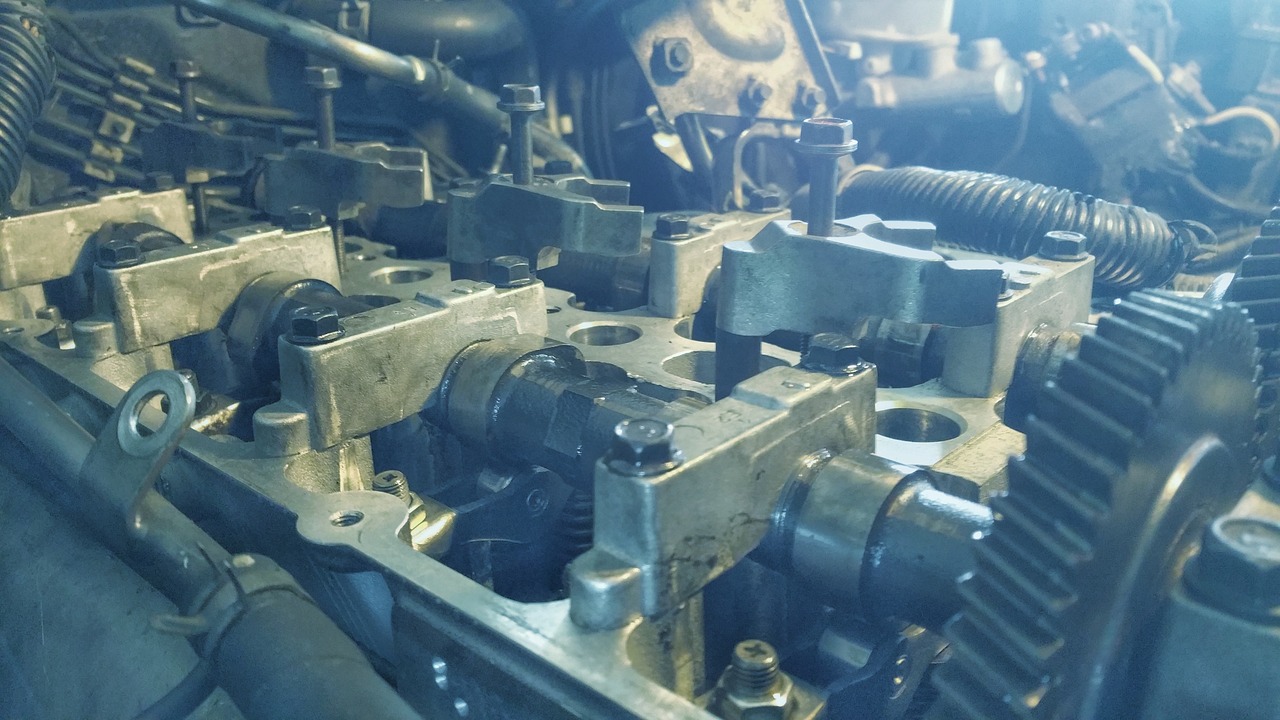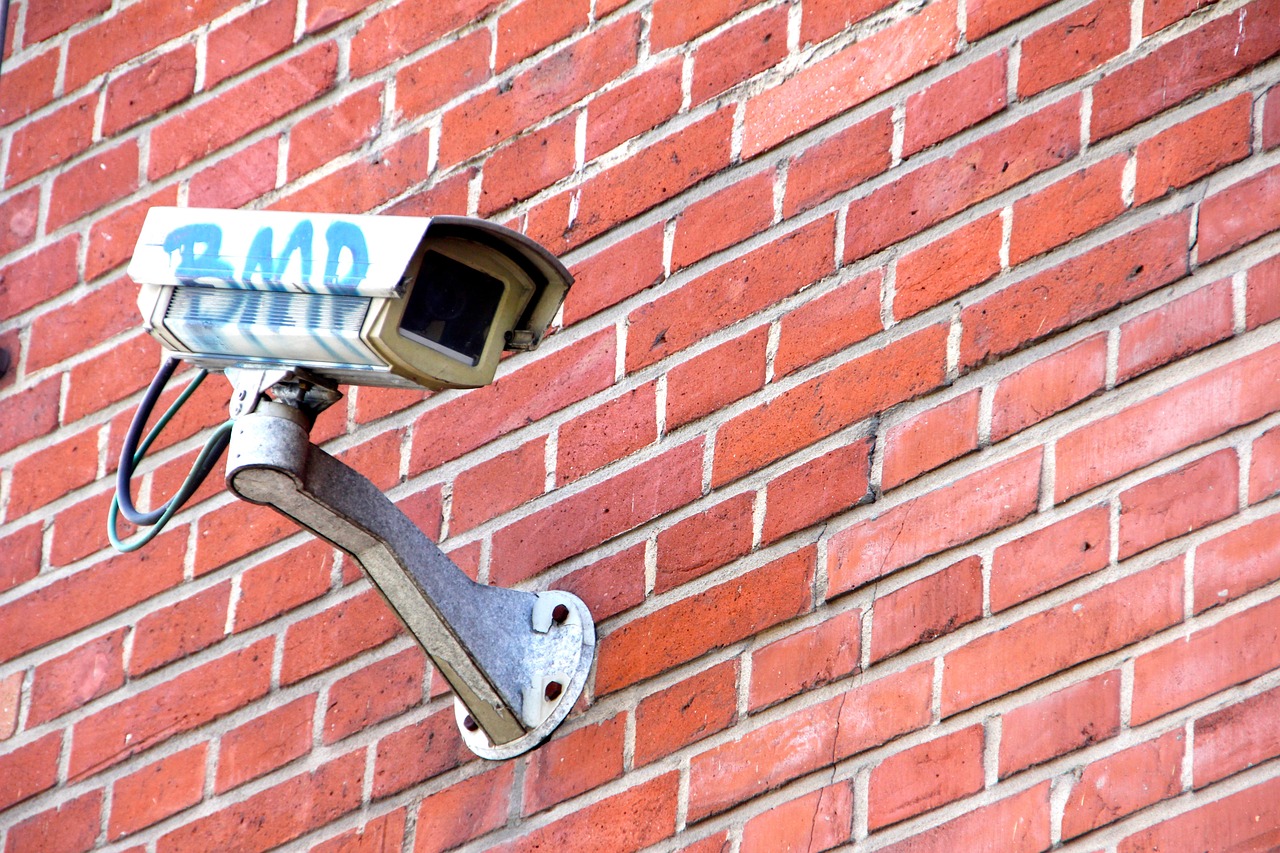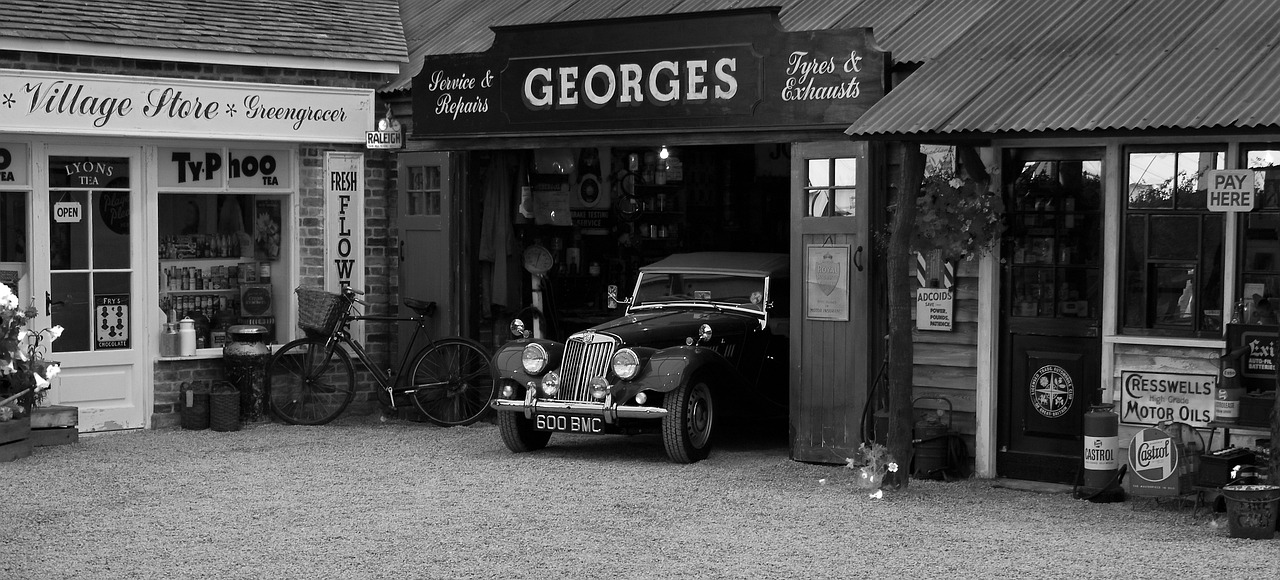How Secure is Your Garage - Safety Tips
In today's fast-paced world, ensuring the safety of your belongings is more important than ever. Your garage, often seen as a mere storage space, can be a treasure trove of valuable items—from your car to tools and seasonal decorations. However, many homeowners overlook garage security, leaving their possessions vulnerable to theft and damage. So, how secure is your garage? This article explores various methods to enhance garage security, offering practical tips and insights to ensure your garage remains a safe haven for your belongings and vehicles.
Garages are often the weak link in home security. Many people leave their garage doors unlocked or use flimsy locks that can be easily picked. Additionally, garages often have direct access to the home, making them an attractive target for intruders. Some common vulnerabilities include:
- Inadequate or outdated locking mechanisms
- Windows that can be easily accessed or broken
- Unmonitored entry points
- Poor lighting that hides suspicious activity
Recognizing these vulnerabilities is the first step in fortifying your garage against potential threats. By addressing these issues head-on, you can transform your garage from a soft target into a fortress.
Choosing the right locks is crucial for garage security. The effectiveness of your locks can make all the difference in preventing unauthorized access. There are various types of locking mechanisms available, each with its own level of security. Some of the most popular options include:
- Deadbolts
- Smart locks
- Padlocks
- Chain locks
Each of these has its strengths and weaknesses, but understanding their differences is key to making an informed decision.
When it comes to garage security, deadbolts stand out as a superior option compared to standard locks. Why? Because deadbolts provide a much higher level of resistance against forced entry. Standard locks can often be picked or bumped, but deadbolts require a much more significant effort to breach. They are designed to fit snugly into the door frame, making it nearly impossible to pry them open without specialized tools.
Proper installation is key to maximizing security. Here are some tips to ensure your deadbolt is installed effectively:
- Choose a high-quality deadbolt lock with a grade of at least 1.
- Install the deadbolt at least 6 inches above the doorknob.
- Ensure the bolt extends at least 1 inch into the door frame.
- Use a reinforced strike plate to enhance strength.
By following these steps, you can significantly boost your garage's security.
Not all locks are created equal. It's essential to invest in reputable brands known for their durability and security features. Some brands to consider include:
- Kwikset
- Schlage
- Yale
- Medeco
These brands have established a solid reputation in the market, ensuring that your investment in garage security is worthwhile.
In an age where technology reigns supreme, smart garage security systems can greatly enhance your protection. Imagine having the ability to monitor your garage in real-time, even when you're miles away! Smart systems often include features such as:
- Cameras with live feeds
- Motion detectors
- Smart alarms
- Remote access control
These systems not only provide peace of mind but also allow for quick action in case of an emergency.
Good lighting can deter intruders effectively. A well-lit garage is less appealing to criminals who prefer to operate under the cover of darkness. Installing bright lights around your garage can significantly improve visibility and enhance security. Consider using:
- LED floodlights
- Solar-powered lights
- Motion sensor lights
Motion sensor lights are an effective security measure. They activate when they detect movement, startling potential intruders and illuminating the area. This sudden burst of light can be enough to scare off anyone looking to cause trouble. Plus, they save energy by only turning on when needed!
Routine maintenance is essential for security. Regular checks of your security features—locks, alarms, and lights—ensure everything is functioning properly. Create a maintenance schedule to inspect these elements every few months. Keeping your garage secure is an ongoing process, not a one-time task.
Q: How can I tell if my garage is secure enough?
A: Evaluate your locks, lighting, and any security systems in place. If you find vulnerabilities, take steps to address them.
Q: Are smart locks worth the investment?
A: Yes! Smart locks offer convenience and advanced security features that can significantly enhance your garage's safety.
Q: How often should I check my garage security?
A: Conduct maintenance checks every few months to ensure all security measures are functioning correctly.

Understanding Garage Vulnerabilities
When it comes to home security, garages often take a backseat in the minds of homeowners. This is surprising, considering that a garage can be a treasure trove for thieves, housing valuable tools, bicycles, and even your car. The truth is, many garages are not built with security in mind, making them easy targets for intruders. So, what are the common vulnerabilities that you should be aware of?
First off, let's talk about the entry points. Most garages have a large door that can easily be compromised if not secured properly. Many homeowners rely on standard garage door locks, which can be easily picked or forced open. Additionally, side doors leading into the garage often have weak locks or are left unlocked, providing another easy access point for would-be burglars.
Moreover, windows can also pose a significant risk. Many garages have small, often overlooked windows that can be easily broken or pried open. These windows may not be reinforced, making them an attractive option for thieves looking for a quick way in. And let’s not forget about poor visibility around your garage. If your garage is tucked away in a dark corner of your property, it becomes a prime target for intruders who prefer to work under the cover of darkness.
Another factor to consider is the lack of surveillance. Many garages are not monitored by security cameras, leaving them vulnerable to break-ins. Without any form of monitoring, it becomes incredibly difficult to deter criminals or identify them if a break-in occurs. In addition, some homeowners might not even realize that their garage door is left open, providing easy access for anyone passing by.
To sum it up, the vulnerabilities in your garage can be categorized as follows:
- Weak Locks: Standard locks that are easy to pick.
- Unsecured Windows: Small windows that can be easily broken.
- Poor Lighting: Dark areas that provide cover for thieves.
- Lack of Monitoring: Absence of cameras or alarms.
- Open Doors: Forgetting to close the garage door can invite trouble.
By understanding these vulnerabilities, you can take proactive measures to secure your garage. It’s essential to assess your garage's security features and make improvements where necessary. Remember, a well-secured garage not only protects your belongings but also contributes to the overall safety of your home.

Effective Locking Mechanisms
When it comes to securing your garage, choosing the right locks is not just important; it's essential. Many homeowners underestimate the significance of effective locking mechanisms, often opting for the most basic solutions. However, a garage can house valuable items, from tools to vehicles, and it deserves the same level of security as the rest of your home. So, what are the best options out there? Let's dive into the various locking mechanisms available and see how they stack up against one another.
First off, we have the classic standard locks. These are the locks that most people are familiar with, often found on residential doors. While they may offer a basic level of security, they can be easily compromised. Intruders often have tools at their disposal that can pick or force these locks open. So, while they might keep your garage closed, they certainly don't keep it secure.
On the other hand, we have deadbolts, which are a significant upgrade in terms of security. Unlike standard locks, deadbolts require a key to be turned in order to unlock them, making them much harder to manipulate. The added layer of complexity in their design means that they can withstand much more force than a standard lock. If you're serious about garage security, installing a deadbolt should be at the top of your list.
To further illustrate the differences between these two types of locks, let's look at a quick comparison:
| Feature | Standard Locks | Deadbolts |
|---|---|---|
| Resistance to Picking | Low | High |
| Resistance to Force | Moderate | High |
| Ease of Installation | Easy | Moderate |
| Cost | Low | Moderate to High |
As you can see, deadbolts clearly outperform standard locks in several critical areas. However, it’s not just about choosing a deadbolt; proper installation is key to maximizing its effectiveness. Even the best lock can be compromised if it’s not installed correctly. In the next section, we will provide some installation tips for deadbolts to ensure you get the most out of your investment.
Installing a deadbolt is a straightforward process, but there are a few key steps you should follow to ensure it’s done right:
- Choose the Right Location: Ensure that the deadbolt is installed at a height that is convenient for use but also out of reach for potential intruders.
- Drill the Hole: Use a drill to create a hole for the deadbolt. Make sure to measure twice and drill once to avoid mistakes.
- Install the Deadbolt: Follow the manufacturer's instructions carefully. Ensure that the deadbolt fits snugly within the hole and that the strike plate is secured properly.
- Test the Lock: After installation, test the lock several times to ensure it operates smoothly.
Another crucial aspect of enhancing your garage security is selecting the right lock brand. Not all locks are created equal, and investing in a reputable brand can make a world of difference. Brands like Schlage, Kwikset, and Yale are known for their durability and security features. They offer a range of options that can cater to your specific needs, whether you’re looking for a simple deadbolt or a more advanced locking mechanism.
In conclusion, when it comes to securing your garage, the locks you choose play a pivotal role. By opting for deadbolts over standard locks and ensuring they are installed correctly, you can significantly enhance the security of your garage. Additionally, investing in reputable brands will further protect your belongings and give you peace of mind.

Deadbolts vs. Standard Locks
When it comes to securing your garage, one of the most crucial decisions you'll make is choosing the right type of lock. You might be wondering, "What’s the difference between deadbolts and standard locks?" Well, let’s break it down! Standard locks, often the type you see on residential doors, typically rely on a spring mechanism. While they can keep your garage door closed, they might not stand up to a determined intruder. On the other hand, deadbolts offer a much higher level of security. They use a solid metal bolt that extends deep into the door frame, making it significantly harder to force open.
Imagine your garage as a treasure chest; would you rather have a flimsy latch or a sturdy lock that keeps your treasures safe? Deadbolts are designed to resist picking, bumping, and other common break-in techniques, while standard locks can be more susceptible to these methods. For instance, if someone were to try to pick a standard lock, they might succeed with minimal effort. However, a deadbolt requires a different level of skill and tools, which often deters thieves right off the bat.
To give you a clearer picture, here’s a quick comparison:
| Feature | Deadbolts | Standard Locks |
|---|---|---|
| Security Level | High | Medium |
| Resistance to Picking | High | Low |
| Ease of Installation | Moderate | Easy |
| Cost | Higher | Lower |
While deadbolts may come with a higher price tag and require a bit more effort to install, the peace of mind they provide is invaluable. Think of it as an investment in your safety. Plus, many deadbolts come with additional features like keyless entry or smart technology, which can further enhance your garage's security. In contrast, standard locks might save you a few bucks upfront, but they could cost you a lot more in terms of lost valuables or damage to your property.
In conclusion, if you want to bolster your garage security, opting for deadbolts over standard locks is a no-brainer. They offer superior protection and can deter would-be intruders effectively. Remember, your garage is an extension of your home, and it deserves the same level of security as your front door!

Installation Tips for Deadbolts
Installing a deadbolt is a crucial step in fortifying your garage security, and it’s easier than you might think! First, you’ll want to gather the right tools. You’ll need a drill, a chisel, a screwdriver, and a measuring tape. Think of this process as a mini DIY project that not only enhances safety but also gives you a sense of accomplishment. Before you dive in, ensure you choose the right type of deadbolt for your garage door. A single-cylinder deadbolt is common, but if you have a door with glass panels, consider a double-cylinder deadbolt for added security.
Next, let’s talk about the installation process itself. Start by marking the height at which you want the deadbolt to be installed, typically around 48 inches from the ground. This height is not just practical; it also makes it harder for an intruder to reach. Then, measure and mark the positions for the deadbolt and the strike plate on the door frame. It’s essential to be precise here—after all, a small mistake can compromise the lock's effectiveness.
Once you've marked everything, it’s time to drill! Use a hole saw to create a hole for the deadbolt and a chisel to carve out space for the strike plate. Remember, patience is key. If you rush, you might end up with a misaligned lock, and that’s the last thing you want. After drilling, you can insert the deadbolt into the hole and secure it with screws. Make sure to test it a few times to ensure it locks and unlocks smoothly.
Lastly, don’t overlook the importance of the strike plate. This little piece of metal is what keeps the deadbolt secure when it's locked. Make sure it’s installed firmly, using long screws that reach into the door frame for maximum strength. If you want to take it a step further, consider reinforcing the door frame with a security strike plate that adds an extra layer of defense against forced entry.
To summarize, here’s a quick checklist for installing your deadbolt:
- Gather the necessary tools: drill, chisel, screwdriver, measuring tape.
- Choose the right type of deadbolt for your garage door.
- Mark the installation height and positions accurately.
- Drill and chisel carefully to create space for the deadbolt and strike plate.
- Secure the deadbolt and ensure it functions smoothly.
- Install a strong strike plate for added security.
By following these tips, you can significantly enhance the security of your garage. Remember, a well-installed deadbolt is like a sturdy fortress protecting your valuable belongings and vehicles. So, roll up your sleeves, grab those tools, and get to work!

Choosing the Right Lock Brand
When it comes to securing your garage, the choice of lock brand can make all the difference. Not all locks are created equal, and selecting a reputable brand is essential for ensuring your peace of mind. Just like you wouldn't trust a flimsy umbrella in a storm, you shouldn't rely on subpar locks to protect your valuable belongings. So, what should you look for in a lock brand?
First and foremost, consider durability. A lock that can withstand physical attacks, such as picking or forced entry, is crucial. Brands like Schlage, Kwikset, and Medeco have built a reputation for producing robust locks that stand the test of time. These manufacturers invest in high-quality materials and advanced engineering to ensure that their locks can resist tampering.
Next, think about the security features offered by the brand. Look for locks that come with features such as anti-drill plates, reinforced strike plates, and pick-resistant pins. For instance, Medeco locks are known for their patented key control and high-security features, making them a top choice for those seeking maximum protection.
Another important aspect is the warranty and customer support provided by the brand. A good warranty signifies that the company stands behind its product. Brands like Schlage often provide lifetime warranties on their locks, giving you added confidence in your purchase. Additionally, responsive customer support can be invaluable if you ever encounter issues with your lock.
Lastly, consider the price point. While it might be tempting to go for the cheapest option, remember that investing a little more in a high-quality lock can save you a lot in the long run. Think of it as buying insurance; you want to make sure you have the best coverage possible. A lock that fails to protect your garage could cost you much more than the initial investment.
In summary, when choosing the right lock brand for your garage, prioritize durability, security features, warranty, and price. It's an investment in your safety and peace of mind. Remember, a secure garage is a happy garage!

Smart Garage Security Systems
In today's world, where technology is advancing at lightning speed, have become a game-changer for homeowners. Imagine being able to monitor your garage from anywhere in the world, all thanks to a few clever gadgets! These systems not only provide peace of mind but also add a layer of convenience that traditional security measures simply can't match.
One of the most popular components of a smart garage security system is the smart camera. These cameras come equipped with high-definition video capabilities, night vision, and motion detection features. With a smart camera, you can receive alerts on your smartphone whenever there’s movement detected in your garage. This means you can keep an eye on your belongings even when you're miles away. Plus, many smart cameras allow for two-way audio, enabling you to communicate with anyone in your garage, whether it's a family member or a delivery person.
Another essential element of smart garage security is the smart lock. Unlike traditional locks, smart locks can be controlled via your smartphone, allowing you to lock or unlock your garage door remotely. This is particularly useful if you need to grant access to someone while you're not home. Some smart locks even come with features like temporary access codes, which you can send to friends or service providers, ensuring that your garage remains secure while still being accessible when needed.
But wait, there's more! Many smart garage security systems integrate with home automation platforms, such as Amazon Alexa or Google Assistant. This means you can control your garage security with voice commands. Imagine saying, “Alexa, lock the garage,” and knowing that your belongings are safe with just a simple voice command!
When considering a smart garage security system, it’s essential to evaluate the options available. Here’s a quick comparison table to help you decide:
| Feature | Smart Camera | Smart Lock | Smart Alarm System |
|---|---|---|---|
| Remote Monitoring | Yes | Yes | Yes |
| Motion Detection | Yes | No | Yes |
| Two-Way Audio | Yes | No | No |
| Voice Control | Yes | Yes | Yes |
In addition to cameras and locks, smart alarm systems are another fantastic option to consider. These systems can trigger alarms when unauthorized access is detected, alerting you and even notifying local authorities if necessary. Imagine the peace of mind you would feel knowing that your garage is not just monitored but actively protected against intrusions!
In summary, investing in a smart garage security system is like giving your garage a high-tech shield. Whether you opt for smart cameras, locks, or alarm systems, you are taking significant steps to enhance your home security. With the ability to monitor and control your garage remotely, you'll never have to worry about your belongings being left unprotected again!
- What is a smart garage security system? A smart garage security system includes devices like smart cameras, locks, and alarms that can be monitored and controlled remotely through a smartphone or smart home device.
- Are smart locks safe? Yes, smart locks are generally safe when installed correctly and used with strong passwords or biometric security features.
- Can smart garage systems be integrated with other home security systems? Absolutely! Many smart garage systems can be integrated with existing home security systems for comprehensive protection.
- Do I need a professional to install smart garage security systems? While some systems can be installed by homeowners, others may require professional installation for optimal security.

Lighting and Visibility
When it comes to securing your garage, one of the most effective yet often overlooked measures is lighting. Think of your garage as a stage; if the lights are off, the actors (in this case, intruders) can perform without anyone noticing. Good lighting not only enhances the visibility of your garage but also acts as a powerful deterrent against potential break-ins. When your garage is well-lit, it sends a message to would-be thieves: “This place is not worth the risk!”
Installing adequate lighting around your garage can significantly improve safety. It’s not just about having a bulb hanging from the ceiling; it’s about strategic placement. Consider the following areas where you should focus your lighting efforts:
- Near entry points such as doors and windows
- Along pathways leading to your garage
- In darker corners where visibility is limited
Moreover, the type of lighting you choose can make a huge difference. For instance, LED lights are not only energy-efficient but also provide bright illumination, making it harder for intruders to hide in the shadows. Additionally, incorporating solar-powered lights can be a cost-effective solution, especially if your garage is situated in an area with ample sunlight. These lights can be placed strategically to illuminate the perimeter of your garage, ensuring that all angles are covered.
One of the most effective lighting solutions for enhancing garage security is the use of motion sensor lights. These lights automatically turn on when they detect movement, startling any intruder and drawing attention to their presence. The sudden burst of light can be enough to send a burglar running. Not only do motion sensor lights enhance security, but they also save energy by only operating when needed. Imagine walking up to your garage at night, and as you approach, the lights flicker on, illuminating your path and making you feel safer. It’s like having a friendly guardian watching over you!
But don’t just stop at installing lights; regular maintenance is key to ensuring they function effectively. Burnt-out bulbs or malfunctioning sensors can leave your garage vulnerable. Schedule routine checks to replace any dead bulbs and test the motion sensors to ensure they’re working properly. This simple act can make a world of difference in your garage security.
In conclusion, proper lighting is an essential component of garage security. It not only increases visibility but also deters potential intruders. By investing in good lighting and ensuring it is well-maintained, you're taking a proactive step in protecting your belongings and vehicles. Remember, a well-lit garage is a safe garage!
Q: How can I improve the lighting in my garage?
A: Consider installing LED lights or motion sensor lights around your garage. Ensure that all entry points are well-lit, and check for any dark corners that might need additional lighting.
Q: Are solar-powered lights effective for garage security?
A: Yes! Solar-powered lights are energy-efficient and can be very effective, especially if your garage receives ample sunlight during the day. They can illuminate the perimeter of your garage without increasing your electricity bill.
Q: How often should I check my garage lights?
A: It’s a good idea to check your garage lights at least once every few months. Replace any burnt-out bulbs and test motion sensors to ensure they are functioning properly.

Motion Sensor Lights
When it comes to enhancing the security of your garage, are a game changer. Imagine this: you pull into your driveway after a long day, and as soon as you step out of your car, the lights flicker on, illuminating the entire area. It's like having a personal spotlight that not only lights your way but also acts as a deterrent for any would-be intruders. These lights are designed to detect movement and automatically turn on, providing both safety and peace of mind.
So, how do these clever devices work? Motion sensor lights use a variety of technologies, including passive infrared (PIR) sensors, which detect changes in heat. When someone walks into the detection zone, the sensor triggers the light. This immediate response can startle anyone lurking around, making them think twice about their intentions. The best part? They can be installed in various locations around your garage, including near the garage door, on the side walls, or even above windows.
Here are some advantages of using motion sensor lights:
- Energy Efficiency: Since they only activate when movement is detected, they save electricity compared to traditional lights that stay on all night.
- Increased Safety: Bright lights can help you navigate your garage and driveway safely, especially during nighttime.
- Deterrent Effect: The sudden illumination can scare off potential intruders, making your garage less appealing as a target.
However, not all motion sensor lights are created equal. It's important to consider factors such as range, brightness, and adjustability. Some models allow you to set the sensitivity and duration of the light, which can be especially useful if you have pets or live in a busy area. You wouldn’t want your lights going off every time a squirrel scurries by!
In addition to their security benefits, motion sensor lights can also enhance the overall aesthetic of your garage. With a variety of designs available, you can choose fixtures that complement your home's exterior while providing essential lighting. Whether you prefer sleek modern designs or more traditional looks, there’s something out there for everyone.
To maximize the effectiveness of your motion sensor lights, consider the following tips:
- Install them at a height of 6 to 8 feet for optimal detection.
- Position them to cover the most vulnerable areas of your garage.
- Regularly clean the sensors to prevent dirt and dust from obstructing their functionality.
In conclusion, motion sensor lights are a practical and effective addition to your garage security system. They not only provide illumination but also act as a formidable barrier against potential threats. Investing in these lights could be one of the smartest decisions you make for your garage's safety.
Q: How do I know which motion sensor lights are right for my garage?
A: Look for lights that offer adjustable sensitivity and coverage area. Consider the brightness level and whether you prefer wired or solar-powered options based on your garage's layout.
Q: Can I install motion sensor lights myself?
A: Yes, many motion sensor lights are designed for easy installation. However, if you're uncomfortable with electrical work, it's best to hire a professional.
Q: Will motion sensor lights attract unwanted attention?
A: While they can attract attention, the benefits of deterring intruders typically outweigh this concern. Proper placement can minimize unnecessary activations.

Regular Maintenance Checks
When it comes to garage security, are your best friend. Think of your garage as a fortress; if the walls are crumbling or the gates are rusty, what good is it? Just like you wouldn’t ignore a leaky roof in your home, you shouldn’t overlook the security features in your garage. Regular checks ensure that everything is functioning as it should be, and they can help you spot potential vulnerabilities before they become a problem.
So, what should you be looking for during these maintenance checks? First and foremost, inspect your locks. Are they still working smoothly? Do they show signs of wear and tear? If you notice any stiffness or difficulty in locking or unlocking, it might be time to replace them. Remember, a lock that’s hard to operate can be a red flag for intruders.
Next, take a good look at your garage door. Is it opening and closing properly? Any strange noises or jerky movements could indicate that the door’s mechanism is failing. Not only does a malfunctioning door pose a security risk, but it could also lead to costly repairs down the line. Consider lubricating the moving parts regularly to keep everything running smoothly.
Another critical area to check is the lighting around your garage. Is it bright enough to deter unwanted visitors? If you have motion sensor lights, ensure they are functioning correctly. A well-lit garage is less appealing to intruders, so make sure your lights are clean and positioned to cover all angles.
Additionally, if you’ve installed any smart security systems, perform routine checks on those as well. Are your cameras capturing clear footage? Is your alarm system functioning properly? Technology can fail, and you don’t want to find out the hard way that your security system was down when you needed it most.
To help you remember what to check, here’s a quick checklist:
- Inspect locks for wear and tear.
- Test the garage door operation.
- Check the functionality of motion sensor lights.
- Review smart security systems for performance.
In conclusion, think of regular maintenance checks as a preventive measure—like going to the doctor for a check-up. It’s better to catch issues early than to face the consequences later. By dedicating a little time each month to these checks, you can significantly enhance the security of your garage, ensuring it remains a safe haven for your belongings and vehicles.
Q1: How often should I perform maintenance checks on my garage security?
A1: It’s advisable to conduct maintenance checks at least once a month. However, if you notice any unusual behavior or signs of wear, check immediately.
Q2: What should I do if I find a broken lock or malfunctioning door?
A2: If you discover a broken lock or malfunctioning door, it’s crucial to address the issue as soon as possible. Replace the lock or call a professional to repair the door to prevent unauthorized access.
Q3: Are smart security systems worth the investment for garage security?
A3: Absolutely! Smart security systems offer real-time monitoring and alerts, providing an additional layer of security that can deter intruders and give you peace of mind.
Frequently Asked Questions
- What are the common vulnerabilities of garages?
Garages often have weak points such as insufficient locks, windows that are easy to access, and doors that can be pried open. Many homeowners forget that garages can be an entry point for intruders, making them a target for theft.
- How do deadbolts compare to standard locks?
Deadbolts are generally much stronger than standard locks because they require a key to be opened from both the inside and outside. This extra layer of security makes it significantly harder for intruders to break in, as standard locks can often be easily picked or bumped.
- What are some tips for installing deadbolts?
To maximize security, make sure to install deadbolts on solid doors, use a drill to create pilot holes for screws, and ensure that the bolt extends at least an inch into the door frame. Additionally, consider hiring a professional if you're unsure about the installation process.
- Which lock brands are recommended for garage security?
Some reputable lock brands known for their durability and security features include Schlage, Kwikset, and Medeco. These brands offer a range of options from basic locks to high-security models that can better withstand tampering.
- How can smart garage security systems enhance safety?
Smart garage security systems offer features like real-time monitoring, alerts to your phone, and remote access to cameras and alarms. This technology allows you to keep an eye on your garage from anywhere, providing peace of mind when you're away.
- What role does lighting play in garage security?
Good lighting is essential for deterring intruders. Well-lit areas make it difficult for potential thieves to hide and can alert you or neighbors to any suspicious activity. Motion sensor lights are particularly effective as they activate when someone approaches.
- How often should I perform maintenance checks on my garage security?
It's advisable to conduct maintenance checks at least twice a year. Regularly inspect locks, lighting, and any security systems to ensure everything is functioning properly. This proactive approach can help identify issues before they become serious security risks.



















